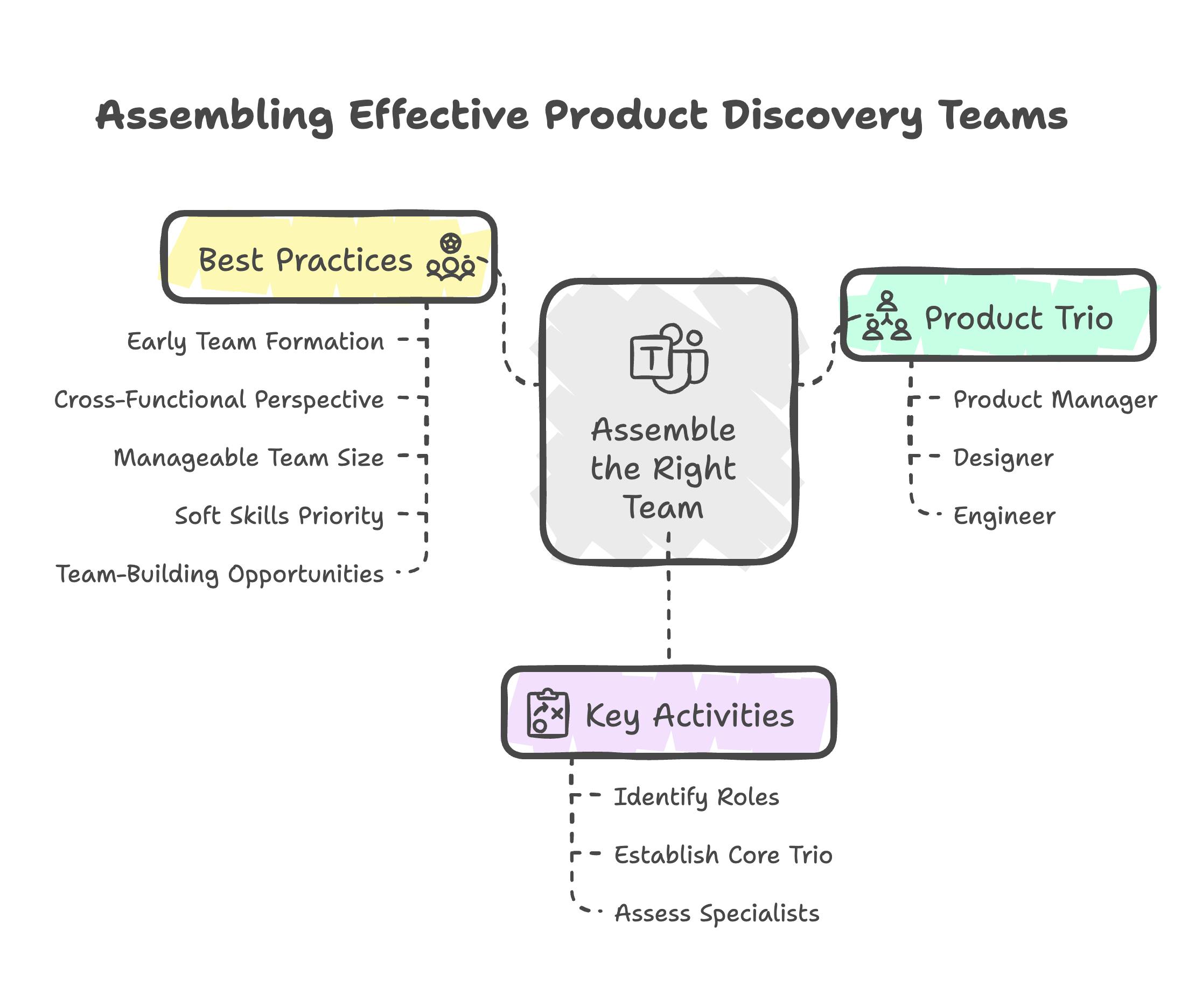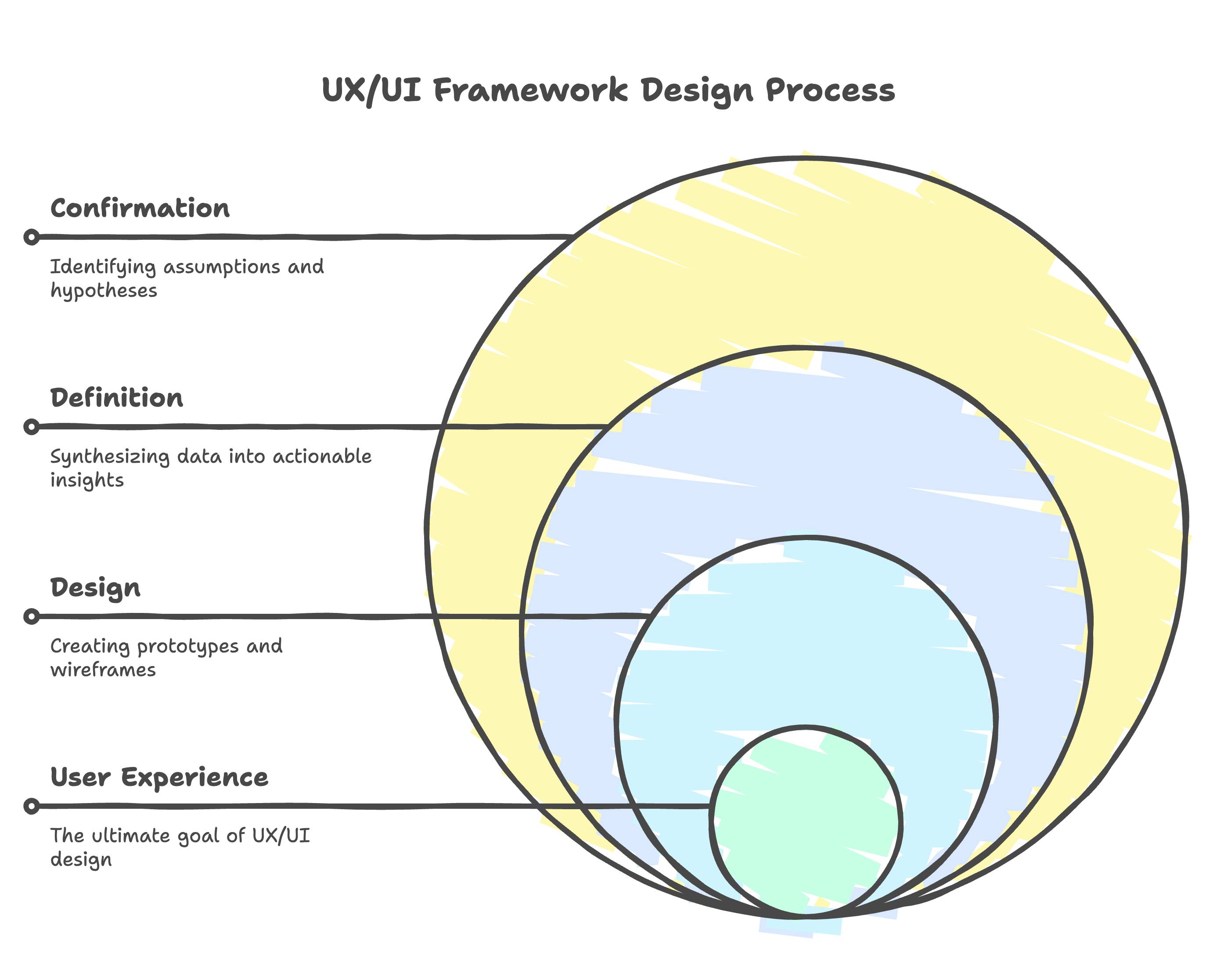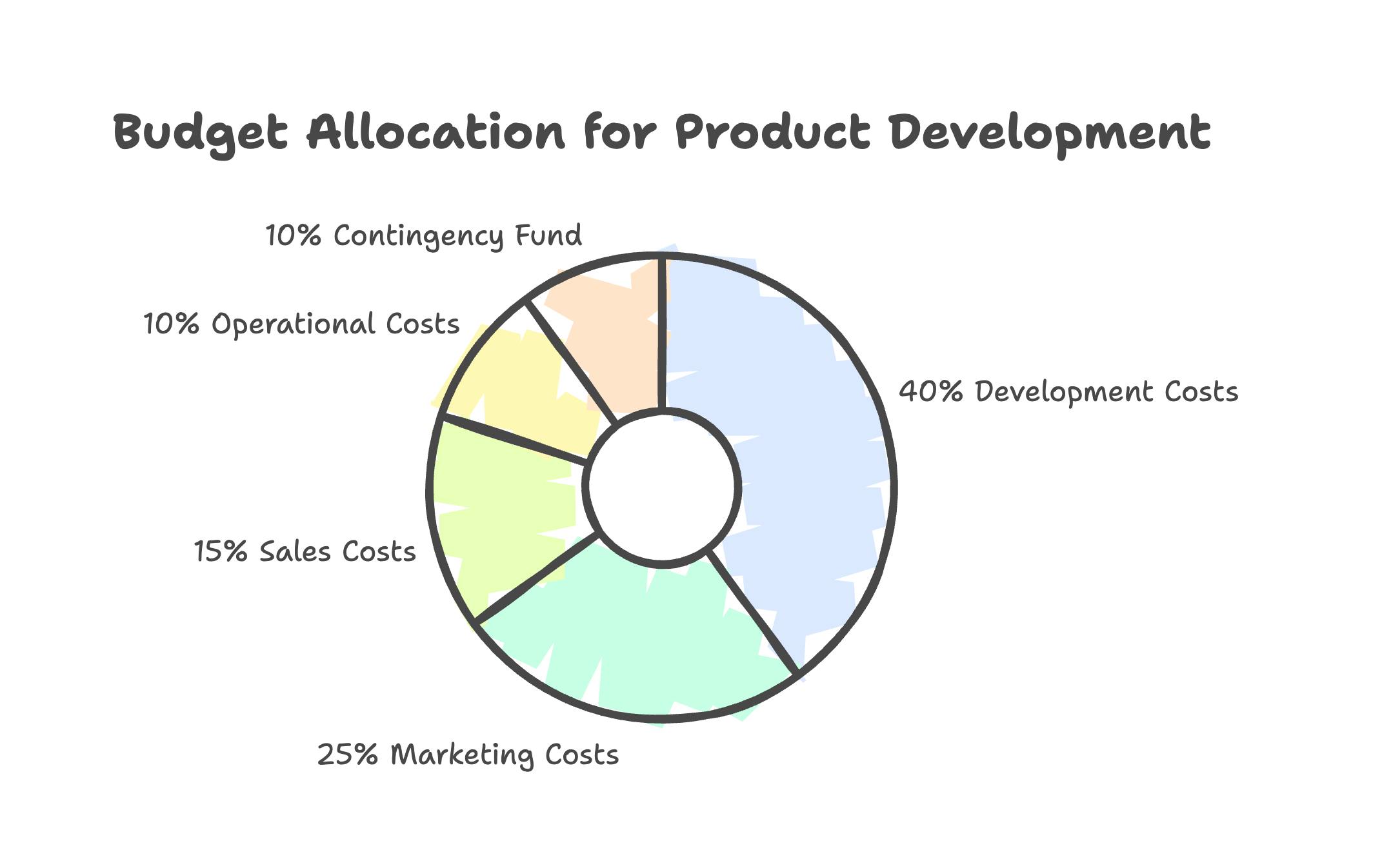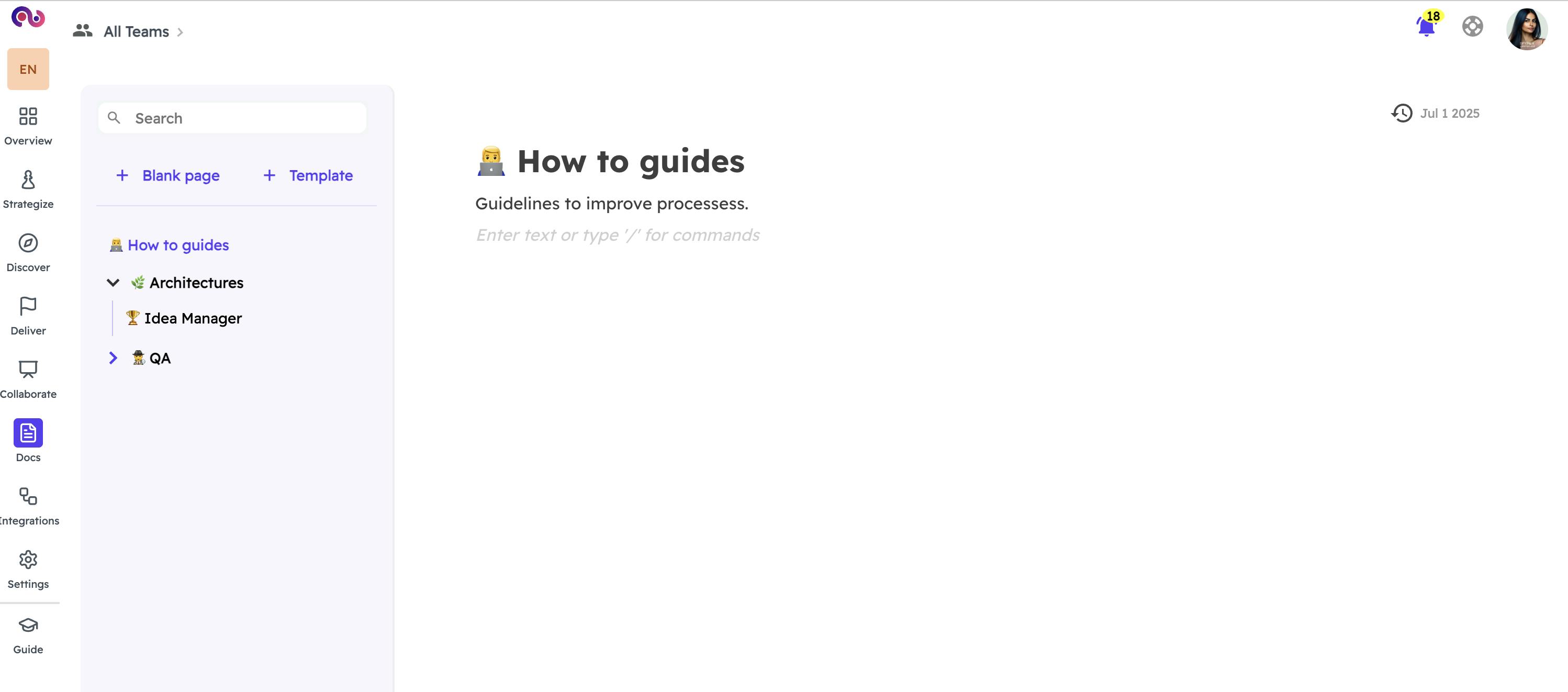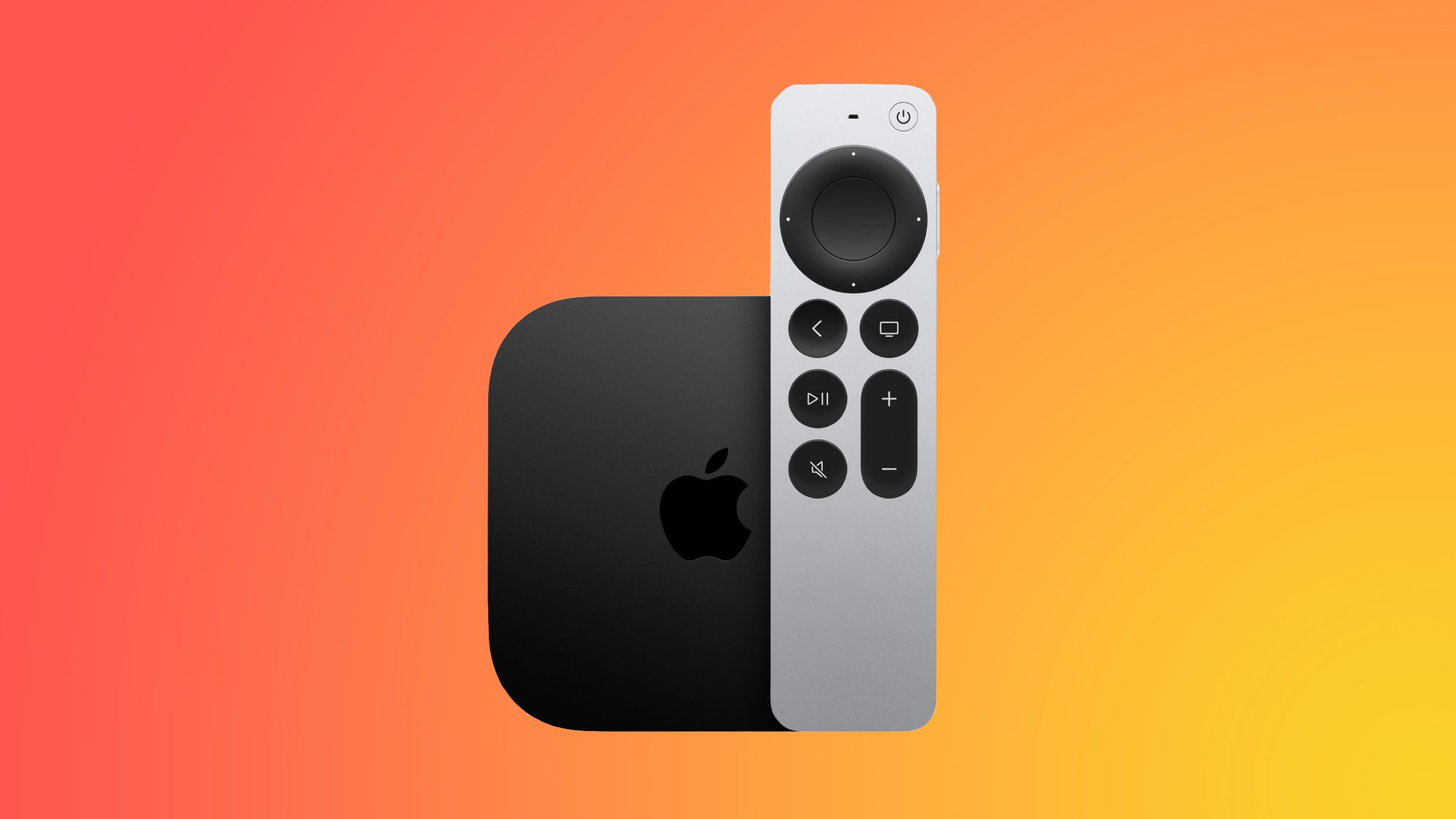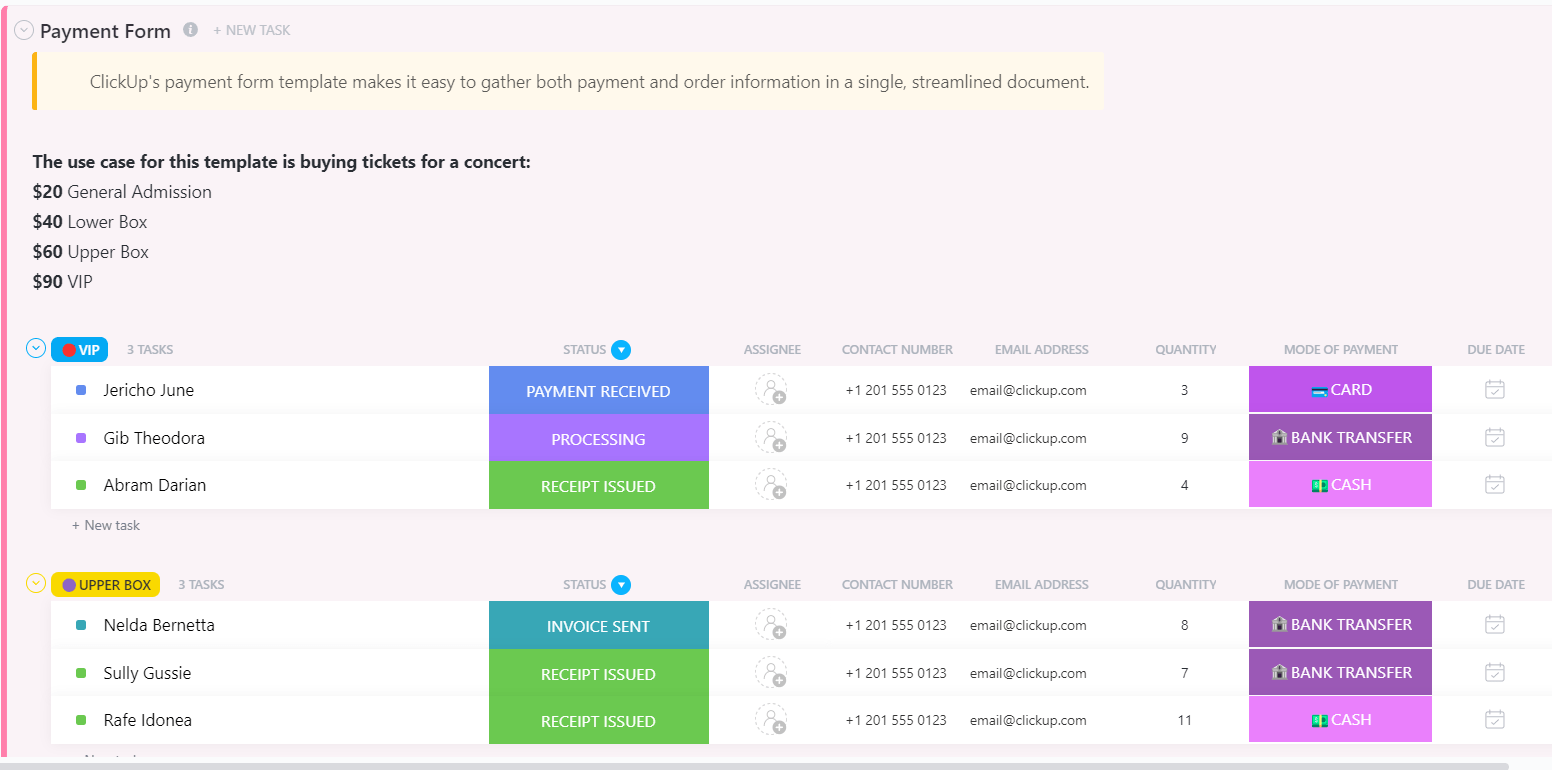Product discovery phases can make or break your entire product development journey. Actually, the discovery phase sets the tone for the entire project, ensuring its success by demonstrating how the product will work, what it will look like, and how it will help your business achieve its goals.
At Shorter Loop, We’ve found that investing in a thorough product discovery process isn’t just helpful—it’s essential. Rather than rushing to ship features, effective product discovery promotes an environment of learning that helps you improve your product incrementally and consistently. Furthermore, a well-structured product discovery framework helps you minimize the chances of project failure, clarify your vision, define project goals, set realistic expectations, and align teams on what should be done and how.
Throughout our experience working with product teams, we’ve identified that product discovery techniques are most effective when they center the customer in your development process, helping you avoid costly mistakes. However, many teams struggle to implement these techniques systematically.
That’s why we’ve created this comprehensive 13-step checklist to guide you through all critical product discovery steps, from gathering your discovery team to finalizing documentation.
Gather the Discovery Team
Assembling the right team marks the initial step in successful product discovery phases. Unlike traditional isolated departments, a well-structured discovery team brings together diverse perspectives to generate valuable insights and solutions.
Gather the Discovery Team Overview
The foundation of effective product discovery lies in creating a cross-functional team. Typically, this team consists of a product manager, a UX designer, and at least one member of the development team. For specialized projects, consider including researchers, data scientists, or analysts who can provide additional expertise. The core product discovery team should remain small and agile—ideally no more than 5 participants for ongoing discovery work. During intensive one-week discovery sprints, this number can expand to up to 10 team members while still maintaining productive collaboration.
Define the Target Audience and Competitors
Understanding your target audience and analyzing competitors forms the bedrock of effective product discovery phases. Before investing resources in development, you must first identify who will use your product and what alternatives already exist in the marketplace.
Define the Target Audience and Competitors Overview
The target audience comprises specific groups most likely to want your product or service—your future customers. Unlike the broader target market, your target audience is a narrower segment sharing common characteristics, demographics, interests, or needs. Through market research, you’ll identify who your product is intended for, allowing you to tailor your solution to their unique needs and preferences. Simultaneously, competitor analysis helps you learn from businesses competing for these same customers, defining a competitive edge that creates sustainable revenue.
Define the Target Audience and Competitors Key Activities
Start by identifying target audience segments based on demographics (age, gender, income), psychographics (lifestyle, values), or behaviors (purchasing habits). Narrow these segments to those with the highest need for your solution, willingness to pay, and potential for repeat business. Next, develop detailed customer personas that include name, background, demographics, goals, pain points, buying behavior, and preferred channels.
For competitor analysis, examine both established players and alternative solutions. Begin by collecting basic information for each competitor: company mission, objectives, capabilities, size, revenue, target market, and market share. Analyze their product features, pricing, and positioning strategy. Categorize competitors by scale—small niche players, mid-size established brands, and industry giants—focusing particularly on those in your same tier.
Finally, create a competitor matrix with at least seven key categories: core features, financial reports, marketing channels, messaging, geographic reach, pricing strategy, and customer sentiment.
Define the Target Audience and Competitors Best Practices
Conduct both direct and indirect research—combine existing sources for general market information with direct customer engagement for nuanced understanding. Explore beyond obvious competitors to discover what alternatives your users actually compare you to.
Remember that market research isn’t a one-time endeavor but something to continually invest in as conditions change. Update your competitive analysis quarterly to ensure you don’t lose track of market shifts. Focus not just on feature comparisons but on how users feel when comparing products—emotional drivers often matter more than feature sets, especially in crowded markets.
Lastly, present insights visually and concisely so stakeholders can easily digest information and make decisions.
Clarify the Product Vision
A compelling product vision serves as the North Star in successful product discovery phases, providing direction when critical decisions must be made throughout the development journey.
Clarify the Product Vision Overview
The product vision defines the overarching goal you’re aiming for—the fundamental reason for creating the product. First and foremost, it provides continued purpose in an ever-changing world, acting as the product’s true north. In essence, a strong vision motivates teams when challenges arise and facilitates effective collaboration. Unlike roadmaps or short-term objectives, the vision focuses on the long-term impact rather than immediate deliverables. It describes the positive change your product should bring about and how it will shape the future for users.
Throughout the product discovery process, the vision remains relatively static, keeping your team oriented in the right direction even as strategies adapt to market conditions.
Clarify the Product Vision Key Activities
To develop a powerful product vision, focus on these critical activities:
- Identify your product’s purpose – Ask why you’re excited to work on this product, why you care about it, and what positive change it should create
- Conduct collaborative visioning workshops – Instead of formulating a vision alone and selling it to stakeholders, create it together to ensure shared ownership
- Define the problem your product solves – Clarify precisely what user needs you’re addressing
- Differentiate the vision from strategy – Keep the vision (destination) and strategy (path) separate, enabling strategic pivots while maintaining direction
- Confirm alignment with company vision – Verify that your product vision supports the broader organizational goals
Clarify the Product Vision Best Practices
Make your vision statement short and memorable—easy to recite and recall. Furthermore, ensure it’s ambitious yet achievable, stretching beyond immediate capabilities while remaining realistic. Consequently, the best visions focus on creating benefits for others, providing deeper motivation and lasting inspiration.
Always workshop your vision with stakeholders including executives, product teams, and customer-facing staff to test resonance and alignment. Additionally, document your vision and make it accessible to everyone, fostering organization-wide understanding.
In light of its importance, revisit your vision annually or after significant market changes to maintain relevance. Remember that a customer-centered vision keeps development priorities focused on solving genuine user problems, which is essential for product discovery success.
Identify and Document Risks
Risk identification serves as a critical safeguard in product discovery phases, protecting both your investment and product success. Indeed, the most overlooked moment to tackle product risk is during product discovery when teams often focus exclusively on ideation and validation.
Identify and Document Risks Overview
Product risks generally fall into four fundamental categories that every discovery team must address.
First, value risk concerns whether customers will buy or users will choose to use your product.
Second, usability risk focuses on whether users can figure out how to use it effectively.
Third, feasibility risk evaluates whether your engineers can build what’s needed with available time, skills, and technology.
Fourth, business viability risk determines whether the solution works for various aspects of your business including sales channels, legal compliance, and monetization.
Effective risk documentation transforms these intangible anxieties into structured data that can be actively managed.
Identify and Document Risks Key Activities
Begin with a risk discovery session alongside your opportunity assessment. List all variables that must be true for your product or feature to succeed, then ask pointed questions like “What could go wrong?” and “Are we assuming behavior that contradicts existing usage patterns?”.
Next, utilize a risk mapping canvas to identify risks across four dimensions: value, usability, feasibility, and business viability. After identifying risks, assess each one using a risk assessment matrix to evaluate two core dimensions: likelihood (how probable the risk is) and impact (how damaging it would be).
For each identified risk, document clear traceability to show how hazards connect to analysis, evaluation, implementation, and verification of risk control measures.
Identify and Document Risks Best Practices
Tackle big risks early—especially value and business risks—as this approach yields significantly better outcomes than addressing them later. Form a cross-functional team for risk identification that includes experts in relevant disciplines, including usability specialists and clinical/application experts who understand potential harms.
When documenting risks, ensure each entry includes risk identification (with unique ID and description), source and trigger, likelihood and impact assessment, risk rating, owner, response strategy, and monitoring plan.
Above all, remember that risk documentation should be a living record—consistently updated throughout the product lifecycle as new information emerges.
Prioritize Features and Define Scope
Feature prioritization represents a crucial junction in product discovery phases where teams decide what to build first and what can wait. Given that resources are always limited, making smart choices about feature implementation becomes essential for product success.
Prioritize Features and Define Scope Overview
Effective feature prioritization ensures that development teams focus on delivering maximum impact with available resources. Primarily, a well-prioritized backlog broadcasts all intended work—including internal tasks customers never see—which helps set expectations with stakeholders.
The product scope, meanwhile, specifies the features, deliverables, target market, and introduction date of the final product. Together, these elements form a comprehensive framework for determining which features represent the highest value.
Prioritize Features and Define Scope Key Activities
First, establish prioritization categories for backlog items to give a clear view of what needs immediate attention. Consider organizing the top portion of your backlog as the contents of your next sprint to create a built-in timeline.
Next, implement a prioritization framework such as:
- Impact-Effort Matrix: Plot relative user value against implementation complexity, identifying quick wins (high-impact, low-effort) and big bets (high-impact, high-effort)
- RICE Method: Score features based on Reach, Impact, Confidence, and Effort
- MoSCoW Analysis: Group items into Must Have, Should Have, Could Have, and Will Not Have categories
Notably, after prioritizing features, define the project scope by documenting what is and isn’t included. This involves identifying the project’s goals, deliverables, tasks, deadlines, and milestones.
Prioritize Features and Define Scope Best Practices
Approach prioritization as a team activity rather than a solo endeavor—this creates buy-in and brings diverse perspectives. Furthermore, limit the number of items you’re prioritizing by focusing on bigger initiatives rather than details. As you evaluate features, balance both short-term and long-term needs, recognizing that some important features may need to be implemented at a later date.
For defining scope, document both the project scope (the “how”) and product scope (the “what”). Specifically for product scope, highlight main functionalities and create a features priority list to guide development. Oftentimes, a lean prioritization matrix helps categorize features based on value and effort. Remember that a product shouldn’t try to solve all user problems—focus only on features that serve the mission of satisfying core user needs.
Make Key Technology Decisions
Technology selection forms a critical foundation in product discovery phases, determining how feasible and scalable your product will ultimately be. Making informed technology decisions early prevents costly changes later and ensures your product can meet both current requirements and future growth needs.
Make Key Technology Decisions Overview
Technology decisions involve selecting the appropriate tech stack, frameworks, and platforms that will power your product. This process requires balancing multiple factors including budget constraints, project complexity, team expertise, and long-term maintenance needs. For budget-conscious projects ($25,000-$75,000), LAMP stack offers cost-effectiveness and ease of maintenance.
Enterprise applications ($100,000+) typically benefit from ASP.NET or Java for security and compliance. Startups and MVPs ($50,000-$150,000) often choose MEAN/MERN/MEVN stacks for faster development.
AI and data applications ($75,000-$200,000) frequently require Python’s robust machine learning libraries.
Make Key Technology Decisions Key Activities
Begin with a thorough technical feasibility study assessing whether your proposed solution can be implemented with available technology. Evaluate technical requirements including hardware, software, production processes, and infrastructure. Correspondingly, consider resource availability—from raw materials to technical personnel. Assess scalability potential to accommodate future growth.
After that, analyze compatibility with existing systems to prevent integration issues. Concurrently, evaluate security aspects and identify potential vulnerabilities. Additionally, create a decision matrix comparing potential solutions based on performance, learning curve, deployment ease, vendor support, compatibility, scalability, and licensing options.
Make Key Technology Decisions Best Practices
Start with security in mind as it should be a consideration for every technology decision. Consider long-term costs rather than just immediate expenses—the right technology can prevent costly migrations later. Accordingly, understand your team’s current skill set, as familiarity speeds development and reduces bugs.
Conduct prototyping to test how well your tech stack handles real-world scenarios before full commitment. To begin with, choose proven, stable technology over the latest trends—95% of successful projects use “boring” technology stacks.
Nevertheless, remain open to newer technology when it solves specific problems better, such as Python for AI applications. Primarily, involve diverse stakeholders in decision-making to gain different perspectives and increase buy-in. In the same fashion, document your technology decisions thoroughly, including rationale, alternatives considered, and expected outcomes.
Create a Discovery Roadmap
A well-crafted roadmap serves as the visual blueprint in product discovery phases, enabling teams to navigate the path from idea to implementation with greater confidence and alignment.
Create a Discovery Roadmap Overview
The discovery roadmap visualizes your product discovery process, making abstract concepts tangible and helping stakeholders understand the journey ahead. Primarily, this roadmap connects your product team’s learning to future development activities, ensuring everyone moves in unison toward shared objectives.
Unlike development roadmaps that focus on delivery timelines, discovery roadmaps highlight learning opportunities, key questions to answer, and assumptions to validate. Oftentimes, teams that skip this critical planning step find themselves pursuing misaligned priorities or working without sufficient context.
Create a Discovery Roadmap Key Activities
First, gather all available information about your customers, their needs, and your company’s direction. Document the “why” behind your customers’ product needs alongside your organizational goals. Next, visualize your findings through different mapping techniques:
- Individual maps: Allow team members to create personal roadmaps, giving quieter participants space to contribute ideas without interruption
- Shared maps: Combine successful elements from individual maps into a unified vision that represents diverse perspectives
- Scope maps: Outline different aspects including typical user journeys, customer experiences, and behind-the-scenes support elements
Throughout this process, incorporate industry trends, customer feedback, and professional expertise to inform roadmap decisions. For complex discovery phases, add a discovery theme to your roadmap to get ahead of feature delivery work that might otherwise lack context and evidence.
Create a Discovery Roadmap Best Practices
Scale your discovery efforts appropriately rather than skipping them altogether. Focus narrowly on specific, valuable activities that address targeted questions. In addition, communicate progress frequently during standup meetings and other Agile events. After completing discovery activities, document what you learned, implications, and next steps in concise one-page recaps.
For visual tracking, organize evidence on physical or digital boards that showcase progress and insights. Altogether, ensure your roadmap balances both short-term needs and long-term vision, preventing teams from pursuing innovation merely for innovation’s sake. Lastly, continuously gather customer feedback for each new feature or product update, ensuring your roadmap reflects genuine user problems rather than assumed needs.
Define the Project Timeline
Establishing realistic timeframes represents a pivotal element in product discovery phases, determining how quickly you can bring your concept to market while maintaining quality standards.
Define the Project Timeline Overview
A project timeline in product discovery provides a structured schedule that breaks down the entire process into manageable tasks with specific deadlines. Throughout the discovery phase, this timeline serves as a foundation for the rest of the project, ensuring all stakeholders remain aligned with well-defined, achievable goals. As a result, teams gain a high-level view of the project, fostering improved planning, enhanced communication, effective resource management, increased accountability, risk mitigation, and informed decision-making. In fact, without an accurate timeline, projects frequently experience significant delays—like the Sydney Opera House, which took 14 years instead of 4 and went 1457% over budget.
Define the Project Timeline Key Activities
Initially, define your project’s scope and objectives as the foundation for timeline creation. For instance, outline deliverables, milestones, and the vision before estimating timeframes. Next, break down the project into smaller, manageable tasks using a Work Breakdown Structure (WBS):
- Identify all necessary activities and organize them hierarchically
- Estimate time requirements for each task based on historical data and team input
- Determine task dependencies to establish proper sequencing
- Assign resources including personnel and equipment
Additionally, evaluate potential risks that could impact your timeline, considering factors like third-party integrations or technical challenges.
Define the Project Timeline Best Practices
Often, teams underestimate project complexity or overlook dependencies, making buffer time essential. Primarily, time-box investigation phases—for example, one sprint for concept definition and another for scoping and prioritization. Hence, document all assumptions behind your estimates, which proves helpful if changes become necessary mid-development. Similarly, review the estimated timeline with your team to ensure it’s realistic and achievable. Through regular monitoring and updates, create a living document that evolves as you learn more throughout development. Ultimately, approach timeline creation as a team activity rather than a solo endeavor—this brings diverse perspectives and creates buy-in from all stakeholders.
Assemble the Right Team
The expertise composition within your discovery team plays a vital role in determining the success of your product discovery phases. As AI-driven development accelerates software creation, having the right people becomes even more critical for ensuring the best ideas emerge.
Assemble the Right Team Overview
Effective product teams typically require three essential roles forming what’s often called a “product trio”—a product manager addressing business constraints, a designer solving for user experience, and an engineer handling technical aspects. This fundamental structure represents a significant shift from traditional larger teams, as future product development may see average teams shrinking from 8 people to just 3 core members.
For medium-sized companies, this could mean reducing from 15-20 product teams (120-160 people) to merely 3-5 teams of 3 people each (9-15 total). This evolution reflects how product discovery will become the main activity while AI tools automate delivery aspects.
Assemble the Right Team Key Activities
Begin by identifying necessary roles based on project requirements. First, establish the core product trio foundation. Thereafter, assess whether specialists like researchers, data scientists, or analysts would benefit specific discovery needs. Consider various team structure options based on your organizational needs: cross-functional collaboration teams, product-based teams, feature-based teams, customer segment teams, or performance metric teams.
Define clear responsibilities for each role—product managers handle market assessment and strategy, designers lead discovery workshops and user testing, solution architects evaluate technical viability, plus engineers provide implementation expertise.
Assemble the Right Team Best Practices
Form your product team as early as possible in the development process. Incorporate team members from different specialties to create a cross-functional perspective covering marketability, producibility, cost, and testability. Keep core team size manageable—ideally 8-10 members maximum—to facilitate coordination and scheduling.
Yet, ensure all members have previous experience working in group environments since teams naturally progress through forming, storming, norming, and performing stages.
Moreover, prioritize soft skills over technical capabilities when selecting product managers, as shipping successful products requires coordinating various stakeholders with strong personalities.
Lastly, consider providing team-building opportunities before project kickoff to help members adjust to working together effectively.
Design the UX/UI Framework
Creating a robust UX/UI framework stands as a transformative element in product discovery phases, bridging the gap between concept and tangible user experiences that resonate with your target audience.
Design the UX/UI Framework Overview
The UX/UI framework provides the structural foundation upon which your product’s interface will be built. Throughout the discovery process, this framework transforms raw data into actionable design decisions. Essentially, it establishes a consistent visual language and interaction patterns that connect all aspects of your digital product—including colors, typography, and navigation systems.
A well-designed framework delivers multiple advantages: faster development through pre-built components, consistent user experiences, simplified maintenance, adaptive layouts across devices, plus smoother cross-browser compatibility. Beyond esthetics, an effective UI framework enables developers to build interfaces that are responsive, accessible, and consistent across devices without rebuilding basic components from scratch.
Design the UX/UI Framework Key Activities
Begin with confirmation by identifying assumptions and hypotheses, utilizing vision boards and interview findings. Proceed to definition by creating research syntheses using journey maps and workflow diagrams to summarize gathered data. For the design phase, develop mid-fidelity prototypes that ensure solutions remain user-centered.
Subsequently, create wireframes to perfect the user experience, considering how users will interact with your interface and what information they need to access easily. Consider how patterns will adjust on different devices, either through media queries or alternative customization approaches. Furthermore, evaluate various UI frameworks as potential foundations, understanding their respective strengths in component offerings and responsiveness.
Design the UX/UI Framework Best Practices
Develop comprehensive design systems that outline standards for both visual and functional elements. Utilize component libraries to maintain consistent design elements and interactions across your product. Regularly test your framework with actual users to validate that it meets expectations and addresses genuine needs. Despite esthetic considerations, prioritize usability by reducing cognitive load through appropriate white space and simplified interfaces.
Maintain brand consistency by reflecting typography, logo, color schemes, and other branding elements throughout the application. Ensure your framework supports native accessibility APIs without requiring special effort from developers. Ultimately, remember that the framework should adapt to your users’ contexts—understanding how, where, and why they’ll be using your product.
Design the UX/UI Framework
Prototype testing represents the experimental validation phase in product discovery, transforming theoretical concepts into tangible user experiences that can be evaluated before full development begins.
Build and Test Prototypes Overview
Prototype testing involves evaluating early versions of your product with real users to validate designs and identify problems early on. Throughout this process, you’ll gather insights on usability, design elements, user experience, messaging, and core concepts. Prototypes exist across a spectrum of sophistication:
- Low-fidelity (lo-fi) prototypes: Rough sketches or wireframes that outline basic design concepts
- Mid-fidelity (mid-fi) prototypes: More developed visualizations showing layout and user journey
- High-fidelity (hi-fi) prototypes: Nearly-ready-to-launch mockups with interactive elements
The primary benefit of prototype testing lies in continuous iteration—allowing you to launch products that genuinely serve user needs instead of discovering critical flaws post-launch.
Build and Test Prototypes Key Activities
Start by collecting and analyzing user requirements to inform your prototype development. Following this, clearly define what aspects you want to test, establishing measurable objectives. Then build the actual prototype, considering which fidelity level best suits your current stage—remember to create only what’s needed to answer your specific questions.
Create realistic test scenarios that place users in authentic situations rather than abstract exercises. Afterward, conduct initial user evaluations, encouraging honest feedback about pain points and confusion. Utilize both qualitative methods (revealing the “why” behind behavior) and quantitative approaches (measuring specific metrics) for comprehensive understanding.
Build and Test Prototypes Best Practices
Test early and often—the sooner users interact with your design, the better. On top of that, ensure diversity among test participants to gain broader insights into varying needs and expectations. Accept that prototypes aren’t perfect; they exist primarily to gather feedback.
Document all findings methodically—failing to capture insights is among the biggest pitfalls in prototype testing. Furthermore, maintain consistency across testing sessions to ensure reliable, comparable results. Embrace iterative design by incorporating feedback into successive prototype versions until user issues are reduced to acceptable levels.
Ultimately, remember that prototyping should only require enough development to accurately address current unknowns and move the design process forward.
Estimate and Allocate Budget
Financial planning constitutes a fundamental component in product discovery phases, ensuring your project has sufficient resources while preventing costly overruns that could derail implementation.
Estimate and Allocate Budget Overview
Accurate budget estimation functions as a cornerstone of successful project planning, helping you simplify the estimation process, refine business strategies, and finalize roadmaps. Fundamentally, a proper product discovery phase is a time- and money-saving investment that reduces overall development costs through clearer project goals and requirements. The discovery phase typically costs between 5% to 10% of the overall product development spending, with specific package options ranging from $5,900 for basic discovery services to $9,900 for comprehensive business transformation initiatives.
Estimate and Allocate Budget Key Activities
First and foremost, break down development costs into distinct stages—similar to investment funding rounds—to make expenses more manageable. Consider these key cost categories:
- Development costs (design, software development, hardware prototyping)
- Marketing costs (market research, branding, advertising)
- Sales costs (team salaries, commissions, distribution logistics)
- Operational costs (hosting, maintenance, customer support)
Due to the risks identified earlier, allocate 10-15% of your total budget as a contingency fund to address unexpected challenges. Furthermore, analyze product development complexity by examining questions about material requirements, prototype iterations, and manufacturing methods.
Estimate and Allocate Budget Best Practices
Utilize current, accurate data for grounded financial projections rather than outdated information that could disconnect from financial realities. In conjunction with this, develop guiding principles aligned with strategic priorities to ensure consistent policies across your organization. Primarily, maintain financial transparency through regular budget reviews that identify trending deficits or unanticipated expenses.
Employ thorough vendor research when comparing costs, remembering that the cheapest option isn’t always best—consider experience and negotiation flexibility. Thus, prioritize projects based on strategic objectives to ensure funds target initiatives with maximum impact. For effective resource allocation, involve your team in task assignments to match the right people with appropriate responsibilities.
Finalize the Discovery Documentation
Documentation serves as the final bridge connecting product discovery phases to actual development, ensuring valuable insights don’t disappear when implementation begins.
Finalize the Discovery Documentation Overview
Comprehensive documentation consolidates all discovery findings into deliverables that guide subsequent development. Without proper documentation, your discovery efforts might as well not have been conducted at all. Thorough documentation brings substantial value to the project by addressing potential problems early, which would cost significantly more to resolve in later development stages. Key deliverables typically include a product vision document outlining business goals and acceptance criteria, design concepts with wireframes demonstrating look and feel, architecture vision detailing technology stack and decisions, plus project schedules and cost estimates.
Finalize the Discovery Documentation Key Activities
First and foremost, create discovery session reports after each customer interaction, beginning with a template that includes your research objective, participant details, and interview date. Throughout the process, record key findings, resulting decisions, and notable quotes. Once sufficient research has been conducted, compile a comprehensive learnings report summarizing insights from all interviews and activities. This document should include research timeframes, participant information, tested hypotheses, key findings, and final decisions. Alongside these reports, finalize technical documentation including code audit results and product architecture schematics.
Finalize the Discovery Documentation Best Practices
Prior to completing discovery, synthesize and share your research—failing to do so undermines the value of all previous work. Organize information visually through boards or slides to help others quickly grasp your findings. In conjunction with this, create a central repository for all customer research and interview transcripts, establishing a clear process for transforming insights into actionable work. Remember that documentation should be a living record consistently updated throughout the product lifecycle as new information emerges. Present findings early enough that stakeholders aren’t surprised by decisions, which builds trust and generates higher-quality discussions when needed.
Comparison Table
|
Phase |
Primary Purpose |
Key Activities |
Best Practices |
Timeline/Cost Implications |
|---|---|---|---|---|
|
Gather the Discovery Team |
Create a cross-functional team for diverse perspectives |
– Joint customer interviews- Market research |
– Establish clear Creator/Contributor roles |
Not specifically mentioned |
|
Define Target Audience & Competitors |
Identify future customers and analyze market alternatives |
– Identify audience segments |
– Conduct both direct/indirect research |
Requires continuous investment |
|
Clarify Product Vision |
Provide long-term direction and purpose |
– Identify product purpose |
– Keep vision short and memorable |
Not specifically mentioned |
|
Identify & Document Risks |
Protect investment and ensure product success |
– Risk discovery sessions |
– Tackle big risks early |
Early discovery phase |
|
Prioritize Features & Define Scope |
Focus development on maximum impact items |
– Establish prioritization categories |
– Approach as team activity |
Not specifically mentioned |
|
Make Key Technology Decisions |
Determine technical feasibility and scalability |
– Technical feasibility study |
– Start with security focus |
Budget ranges from $25k-$200k depending on stack |
|
Create Discovery Roadmap |
Visualize path from idea to implementation |
– Gather customer information |
– Scale efforts appropriately |
Not specifically mentioned |
|
Define Project Timeline |
Structure schedule and deadlines |
– Define scope/objectives |
– Include buffer time |
Can prevent significant overruns |
|
Assemble Right Team |
Create effective product development group |
– Establish core product trio |
– Form team early |
Teams trending smaller (3-5 people) |
|
Design UX/UI Framework |
Create structural foundation for interface |
– Confirm assumptions |
– Develop comprehensive design systems |
Not specifically mentioned |
|
Build & Test Prototypes |
Validate designs before full development |
– Analyze requirements |
– Test early and often |
Multiple iterations required |
|
Estimate & Allocate Budget |
Ensure sufficient resource availability |
– Break down development costs |
– Use current data |
5-10% of total development cost |
|
Finalize Documentation |
Bridge discovery to development |
– Create session reports |
– Synthesize/share research early |
Complete before development starts |
Conclusion
Throughout this guide, we’ve explored the essential 13 phases of product discovery that can transform your development process from uncertain to methodical. Effective product discovery undoubtedly serves as the foundation for successful product development, preventing costly mistakes and ensuring alignment among stakeholders.
Following these structured phases allows teams to validate ideas before committing significant resources to development. Actually, investing time in gathering the right team, understanding your audience, clarifying your vision, and identifying risks early will save countless hours and resources later.
Product discovery isn’t simply a preliminary phase—it’s a strategic approach that continues throughout the product lifecycle. Teams that skip or rush through these phases often find themselves building features nobody wants or solving problems that don’t exist.
The systematic process outlined here helps teams make informed decisions rather than relying on assumptions. Therefore, each discovery phase builds upon the previous one, creating a comprehensive understanding of what to build and why.
Remember that product discovery requires balance. Too little discovery leads to misaligned products, while excessive analysis can result in paralysis. Your discovery efforts should scale appropriately to your project’s complexity and risks.
We’ve seen firsthand how teams that implement these discovery phases experience smoother development cycles, better stakeholder alignment, and ultimately, more successful products. The comprehensive checklist presented here offers a practical framework adaptable to various product types and team structures.
Ready to transform your product development process? Start by implementing these discovery phases on your next project, focusing first on gathering a strong cross-functional team and clearly defining your product vision. Subsequently, you’ll find each phase naturally builds toward creating products that genuinely solve user problems and deliver business value.
What discovery phase do you find most challenging? Which techniques have worked best for your team? We’d love to hear about your experiences as you implement these strategies in your organization.
Key Takeaways
Product discovery is a systematic 13-phase process that transforms uncertain ideas into validated, market-ready solutions while minimizing costly development mistakes.
• Assemble cross-functional teams early – Form small, diverse teams (3-5 core members) with product managers, designers, and engineers to ensure comprehensive perspectives throughout discovery.
• Prioritize customer understanding over assumptions – Define target audiences through direct research and competitor analysis, updating insights quarterly to stay aligned with market realities.
• Tackle high-impact risks during discovery, not development – Identify and document value, usability, feasibility, and business viability risks early when they’re cheaper to address.
• Create living documentation that bridges discovery to development – Document findings, decisions, and rationale in accessible formats that guide implementation teams and prevent knowledge loss.
• Balance thorough discovery with timely action – Invest 5-10% of total development budget in discovery phases to prevent significant overruns and misaligned products later.
The discovery phase isn’t just preliminary research—it’s a strategic investment that creates alignment, validates assumptions, and establishes the foundation for products that genuinely solve user problems while delivering business value.
FAQs
Q1. What are the key components of a successful product discovery phase?
A successful product discovery phase typically includes assembling a cross-functional team, defining the target audience and competitors, clarifying the product vision, identifying risks, prioritizing features, and creating prototypes for testing. These components help validate ideas and align stakeholders before significant resources are invested in development.
Q2. How long should the product discovery phase last?
The duration of the product discovery phase can vary depending on the project’s complexity. However, it generally accounts for about 5-10% of the total product development timeline. It’s important to balance thorough discovery with timely action to prevent analysis paralysis.
Q3. Why is it important to involve a diverse team in product discovery?
Involving a diverse team in product discovery brings multiple perspectives to the process. This cross-functional approach helps identify potential issues early, ensures comprehensive understanding of user needs, and facilitates better decision-making. It typically includes roles like product managers, designers, and engineers.
Q4. How can risks be effectively managed during product discovery?
Effective risk management during product discovery involves identifying and documenting risks across four main categories: value, usability, feasibility, and business viability. It’s crucial to tackle high-impact risks early when they’re cheaper to address. Regular risk assessments and maintaining a living risk document throughout the process are also recommended.
Q5. What role does prototyping play in the product discovery phase?
Prototyping is a critical part of product discovery as it allows teams to test and validate ideas before full-scale development. It helps in gathering user feedback, identifying usability issues, and refining the product concept. Prototypes can range from low-fidelity wireframes to high-fidelity interactive mockups, depending on the stage of discovery and the specific aspects being tested.










